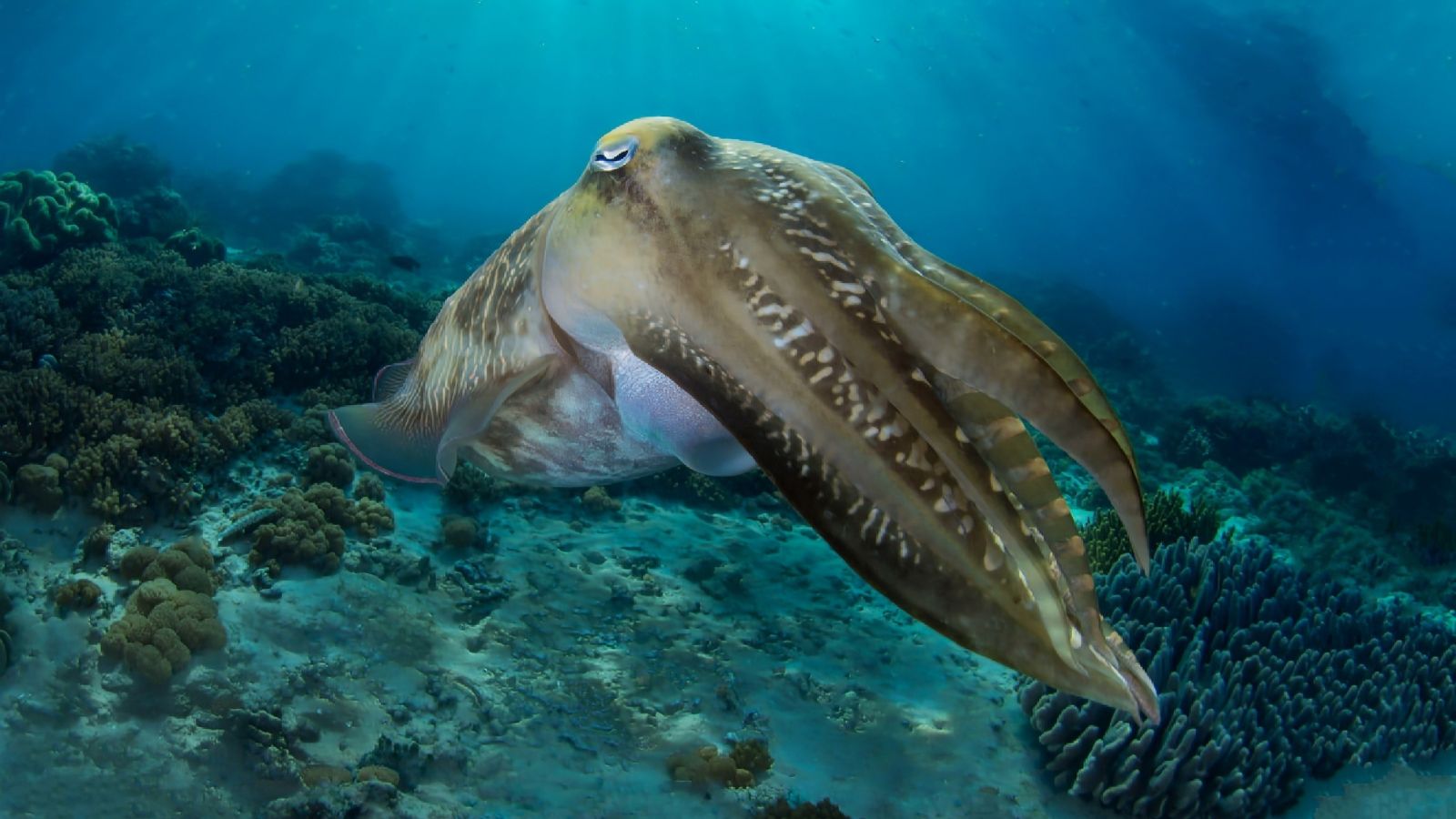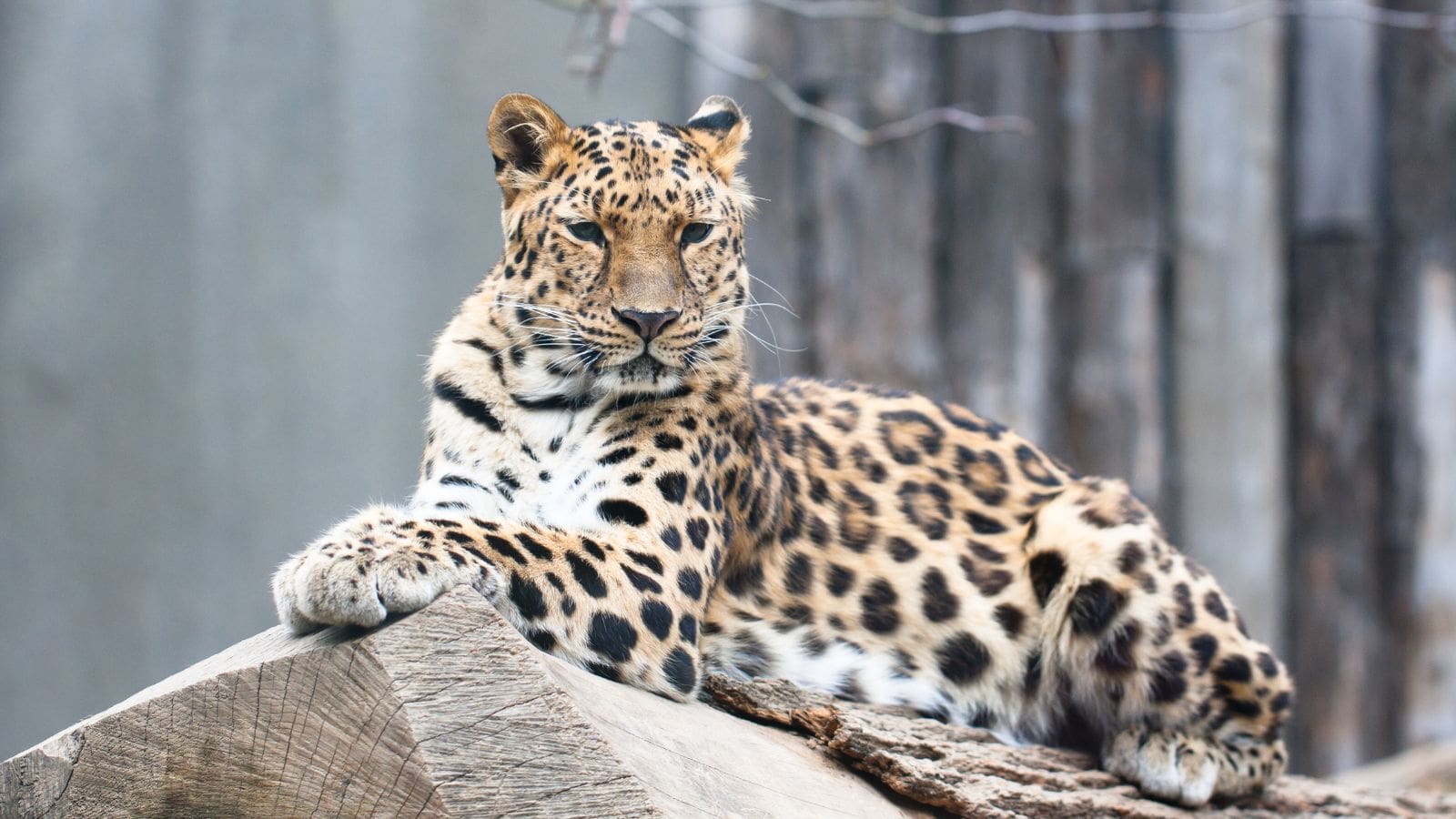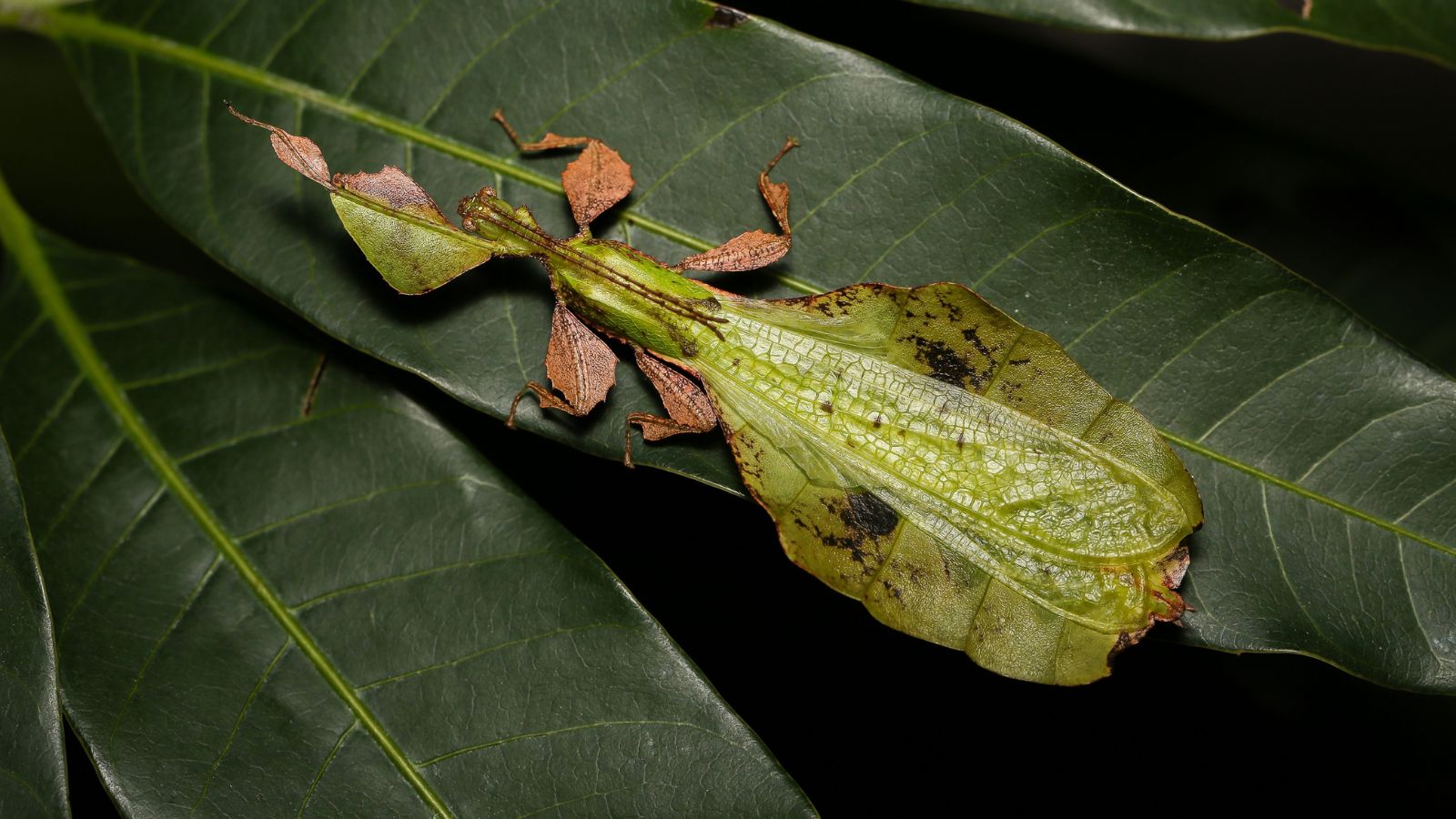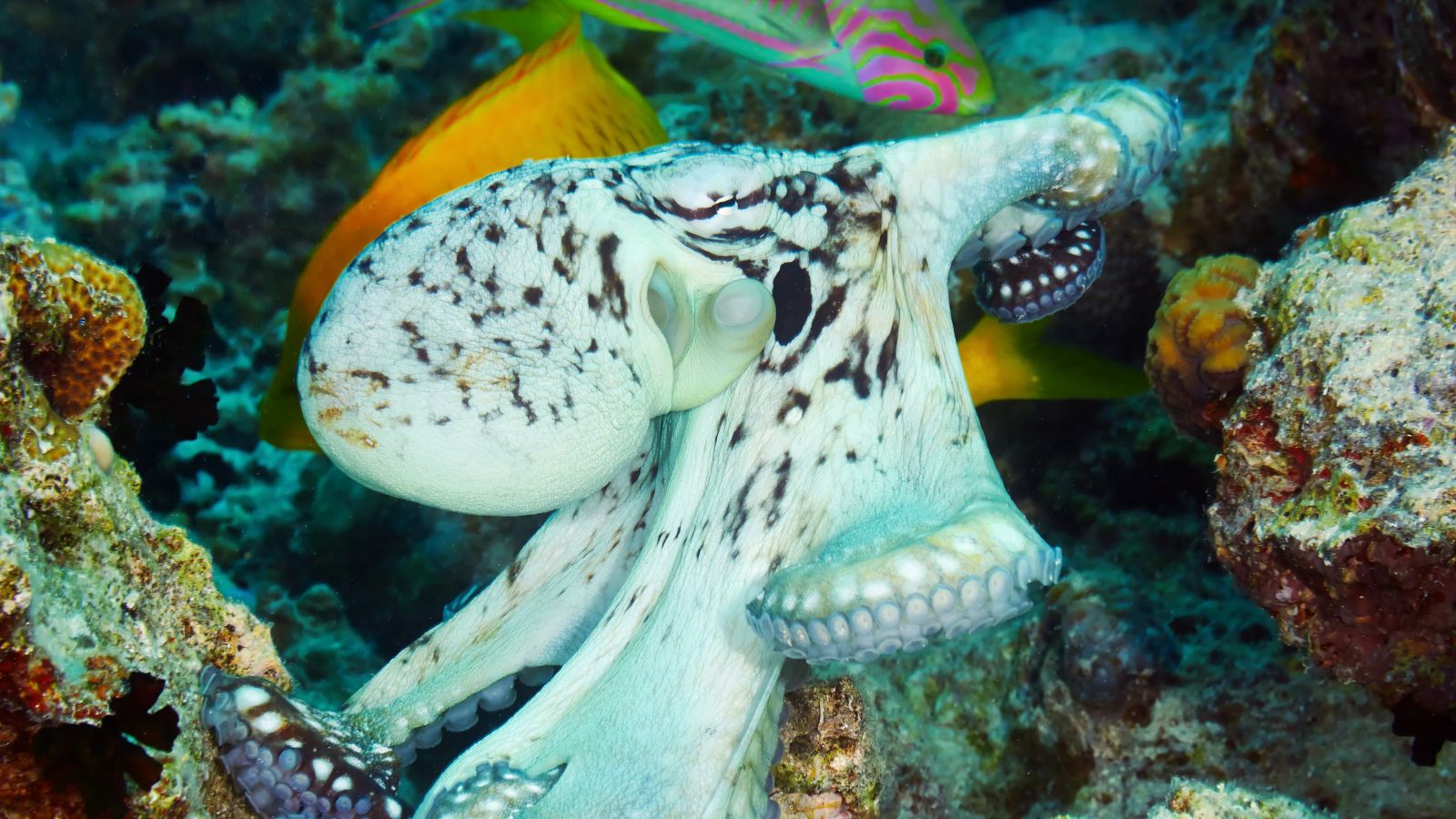Many animals are very good at hiding and can blend in with their surroundings, which helps them avoid being eaten. Some animals can change color, while others look exactly like their environment. We’ll look at 18 animals that are great at hiding and are impossible to see even when they’re right in front of you.
Chameleon

Chameleons are known for their amazing ability to change color, which helps them communicate, regulate body temperature, and hide from predators. According to Wired, their skin cells contain pigments that expand or contract, creating a range of colors and patterns. This remarkable skill allows chameleons to blend in perfectly into various environments.
Leaf-tailed Gecko

Native to Madagascar, leaf-tailed geckos have incredible camouflage. Their bodies mimic the appearance of dead leaves, complete with details like veins and torn edges. These geckos can also flatten themselves against tree bark, becoming nearly invisible. Both their cryptic coloration and body shape make them masters of disguise in their forest habitats.
Arctic Fox

Arctic foxes change their coat color with the seasons. In winter, their fur turns pure white, but their coats shift to brown or gray as summer approaches, matching the tundra’s rocky terrain. This seasonal camouflage helps them hunt and avoid predators in the harsh Arctic environment.
Cuttlefish

Cuttlefish are sea animals with amazing hiding skills. They can quickly change their color, pattern, and even how their skin feels to match what’s around them. These marine animals use specialized cells known as chromatophores to hide from predators and ambush prey.
Stick Insect

Also called phasmids, stick insects are amazing at looking just like plants. Their bodies can look like twigs or leaves, making them hard to spot on the plants where they live. Some even move gently like leaves in the wind. This clever disguise helps stick insects avoid being seen by birds and other animals that might eat them.
Leopard

Leopards’ spot patterns make their body shape less clear, helping them mix into shadows. This good disguise lets leopards sneak up on animals they hunt and hide from bigger predators. Their ability to blend in is very important for leopards to survive in different places across Africa and Asia.
Flounder

Flounders are flat fish with an incredible ability to match the color and pattern of the ocean floor. They can change their appearance in seconds, blending perfectly with sand, rocks, or coral, which helps them avoid predators and ambush unsuspecting prey. Their incredible adaptability makes them successful in many environments.
Giant Leaf Insect

Giant leaf insects take plant mimicry to an extreme. Their bodies are shaped like leaves, with veins, brown edges, and even insect bite marks. What’s more, they can remain motionless for long periods, swaying gently like leaves in the breeze. Their convincing disguise protects them from predators in Southeast Asian forests.
Snow Leopard

Snow leopards have light gray fur with dark spots that help them hide perfectly in their mountain homes. Their thick, patterned coats make them blend in with rocky, snowy areas. This camouflage is very important for these hard-to-spot cats as it helps them hunt their prey and stay hidden in the tough, open lands of Central Asia.
Octopus

Octopuses are masters of disguise in the marine world, as they can instantly change color, pattern, and texture to match their surroundings. Some species even mimic other sea creatures to avoid predators or lure prey. Octopuses use specialized skin cells and muscles to create these remarkable transformations, making them true camouflage experts.
Dead Leaf Butterfly

When its wings are closed, the dead-leaf butterfly looks exactly like a dry, brown leaf. The intricate details on its wings include veins, discolored patches, and even fake insect bites. This remarkable camouflage allows the butterfly to hide from predators by blending in with fallen leaves on the forest floor.
Pygmy Seahorse

Pygmy seahorses are tiny masters of coral reef camouflage. These incredible creatures match the color and texture of the sea fans they inhabit perfectly, and some species even develop skin filaments that mimic coral polyps. Their small size and precise camouflage make pygmy seahorses nearly impossible to spot in their natural habitat.
Owl Butterfly

Owl butterflies have large eyespots on their wings that resemble owl eyes. When at rest with wings closed, they blend perfectly with tree bark. If threatened, they can flash their wing patterns, startling predators with the sudden appearance of ‘owl eyes.’ This dual camouflage strategy helps protect owl butterflies in Central and South American forests.
Leafy Sea Dragon

Imagine seaweed that can swim. Leafy sea dragons, related to seahorses, have intricate leaf-like appendages covering their bodies. These leafy protrusions help them blend perfectly with seaweed and kelp forests. They move slowly, swaying like seaweed in the ocean currents, making them nearly invisible in their Australian coastal habitats.
Tawny Frogmouth

Often mistaken for an owl, the tawny frogmouth is a true master of disguise. With mottled gray and brown feathers, it blends right in with tree bark. This Australian bird will stretch out and freeze when it feels threatened, looking just like a broken branch. Paired with its nocturnal lifestyle, the tawny frogmouth is incredibly hard to spot.
Crab Spider

Crab spiders have an incredible ability to change color to match the flowers they hunt on, shifting between white, yellow, and even pink hues over several days. This adaptation allows them to blend seamlessly into various blossoms, where they lie in wait to ambush pollinating insects. Their effective camouflage makes crab spiders formidable predators in both garden and wildflower settings.
Leaf-nosed Snake

With its head shaped like a leaf, the leaf-nosed snake blends in effortlessly with fallen leaves on the forest floor. Its body is also patterned like leaf litter, providing perfect camouflage and allowing the snake to hunt and hide in its natural habitat.
Merlet’s Scorpionfish

In coral reefs, Merlet’s scorpionfish showcases amazing camouflage. Its body has intricate patterns and fleshy bits that mimic coral and algae. This fish can change color to match its surroundings, from mottled reds to vibrant pinks. Its disguise helps it stay hidden from both prey and predators.
Up Next: 20 Personal Things You Should Never Share With Others

Building meaningful connections with others requires a certain level of transparency and trust, but that doesn’t mean you have to tell your friends and family members everything! Some aspects of our lives are too personal, incriminating, or risky to share. This article explores 20 aspects of your personal life that you should always keep confidential.
20 Personal Things You Should Never Share With Others
18 Things Everyone Forgets to Include in Their Will—But Shouldn’t

Wills and estate plans are essential ways to ensure what will happen to your belongings and property when you die or are incapacitated. However, people often forget to include important information in their wills before it’s too late, complicating matters for their descendants. Here are the 18 common things people forget to include in their will.
18 Things Everyone Forgets to Include in Their Will—But Shouldn’t
18 Items at Walmart that Aren’t Worth Your Hard-Earned Money

For many of us, Walmart is the go-to superstore. Whether we need groceries, clothing, or technology, Walmart is a one-stop shop for everything you would need. However, there are some Walmart products you should avoid at all costs, such as the following 18 examples.
18 ITEMS AT WALMART THAT AREN’T WORTH YOUR HARD-EARNED MONEY
